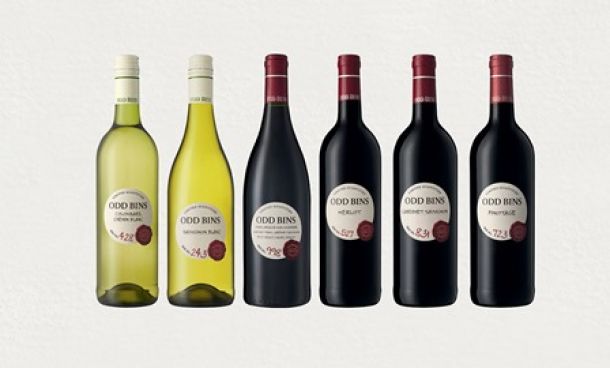Love the region, love the wine
People who have an emotional connection to a region are more likely to buy its products, says wine industry representative body VinPro.
South African wine exports are projected to grow by 13% in the next decade, according to the latest Bureau for Food and Agricultural Policy baseline report, which provides a snapshot of the country’s wine industry and the broader agricultural sector. The bureau’s annual report, produced by researchers from the Universities of Pretoria and Stellenbosch as well as the Western Cape Department of Agriculture, says wine exports reached 313-million litres in 2015, up from 122-million litres in 2000.
In order to take advantage of a recent upsurge in wine tourism, VinPro, the service organisation for 3,500 South African wine producers and cellar members, is working on a "collaborative industry strategy" to improve the resilience, competitiveness and sustainability of the South African wine sector, spokesman Edo Heyns said.
"Wine tourism is booming globally and the South African wine industry has all the attributes required to make tourism a truly remarkable complementary offering," he says.
There were many "significant" benefits to wine tourism, including an increased emotional connection to the region that would translate into increased sales and word-of-mouth advertising. Another significant benefit was employment – for every 12 tourists who visited the region, one job was created.
"There are very few branded agriculture products that have the ability to be regional flag bearers, like in the case of wine," Heyns says.
In 2015, there were 275,000 people working in the wine and wine tourism industries, which contributed R35bn to SA’s gross domestic product, Heyns says. The targets for 2025 were 370,000 jobs and R60bn.
In November, Tourism Minister Derek Hanekom is to open the inaugural "The Business of Wine and Food Tourism" conference in the Cape Winelands. Local and international experts are expected to speak on aspects of regional food and wine travel.
Wine tourism was not new to SA, said Heyns. In 1971 Stellenbosch became the first wine region in SA to establish a wine route. The route lists more than 150 wineries, and there are several others in SA now. The Cape Wineland’s close proximity to Cape Town was "crucial" and the industry has benefited significantly from the many accolades the Mother City has received in recent years, Heyns says.
More and more farmers are spreading their reach in an attempt to ensure year-round revenue, says Produce Marketing Association general manager for Southern Africa Lindie Stroebel. Fruit is a labour-intensive crop, she says, and "farmers need to find ways to utilise labour year-round; and there is risk hedging through diversification".
Stroebel says there is a trend towards replacing vineyards with fruit orchards. "Now we are seeing a reverse; farming is very cyclical. It’s not that there is no demand for wine – our local and international wine industry is flourishing, but risk requires diversification."
Western Cape economic opportunities MEC Alan Winde said on Wednesday that exports to key markets in the rest of Africa, the US and China were growing.
South African wine sales to China rose almost 30% in 2015, according to statistics from South African Wine Industry Information and Systems.
"As part of our Project Khulisa (the province’s economic growth strategy) we have set ourselves the goal of boosting wine exports to strategic markets and the latest trends are excellent indicators," said Winde on Wednesday.
According to a report by the Bureau for Food and Agricultural Policy, the South African wine industry incorporates 100,000ha, and comprises of 3,300 producers. It supports employment for close to 300,000 residents, directly and indirectly.
Winde said transforming the wine industry was a vital part of the industry’s strategic exercise.
The importance of negotiating smart trade agreements was also highlighted in the baseline report. It was found that removing tariffs in crucial markets would be a key contributor to increased wine exports.
Earlier this year, SA and other countries in the region concluded a trade pact with the EU. The Economic Partnership Agreement with the EU will allow SA to export 110-million litres of wine to Europe, up from the current annual duty-free quota of 48-million litres.
The industry is also focused on shifting export product from bulk to packaged, and on boosting value through a focus on quality and targeted marketing drives.
News Category
- International retailers
- On the move
- Awards and achievements
- Legislation
- Wine and liquor
- Africa
- Going green
- Supplier news
- Research tools
- Retailer trading results
- Supply chain
- Innovation and technology
- Economic factors
- Crime and security
- Store Openings
- Marketing and Promotions
- Social Responsibility
- Brand Press Office
Related Articles

Makro secures exclusive rights to SA’s most sou...

Checkers adds 41 new wines to Odd Bins range

With petrol at almost R20 a litre, food prices ...

Petrol price shocker for South Africa


